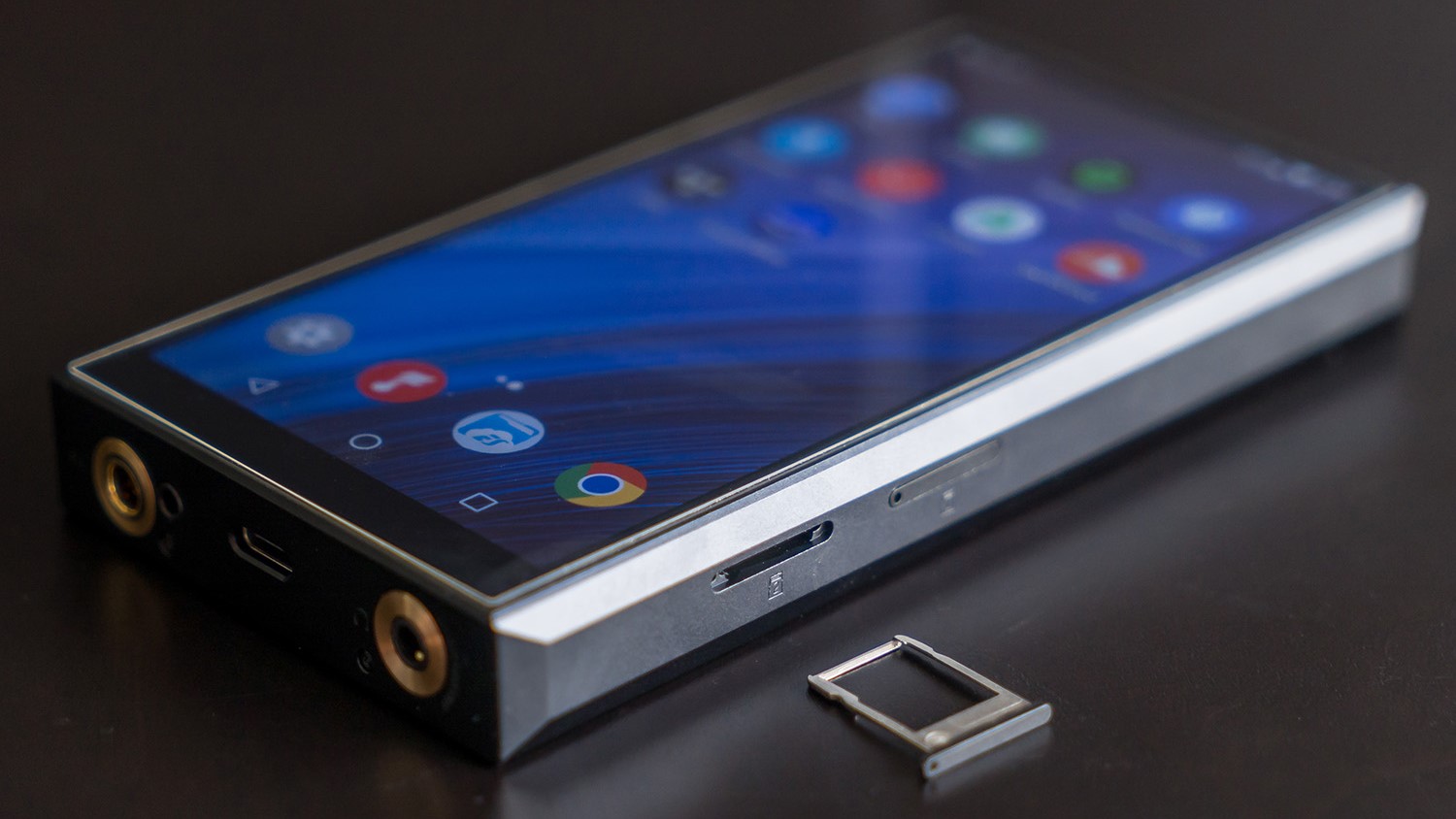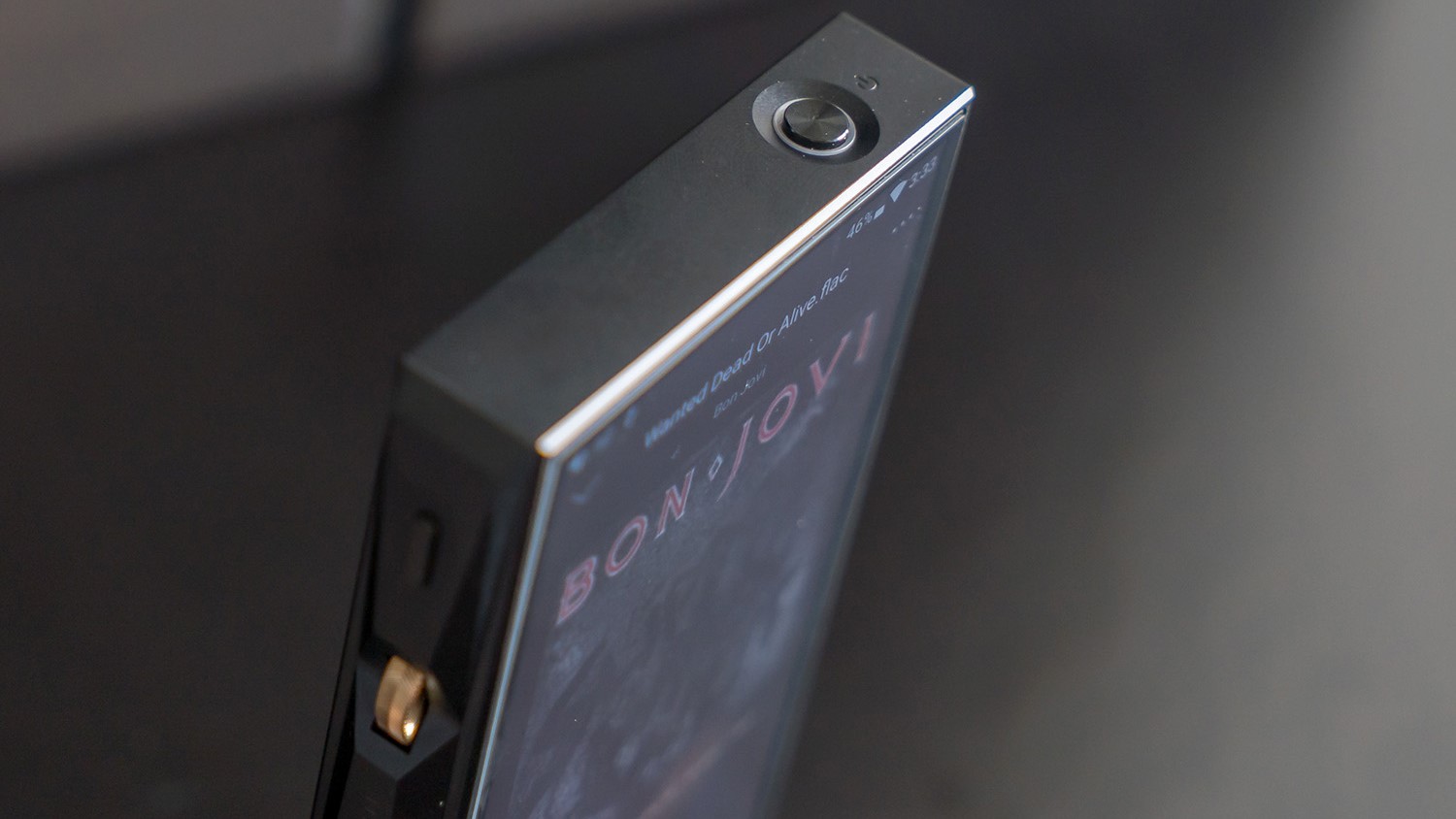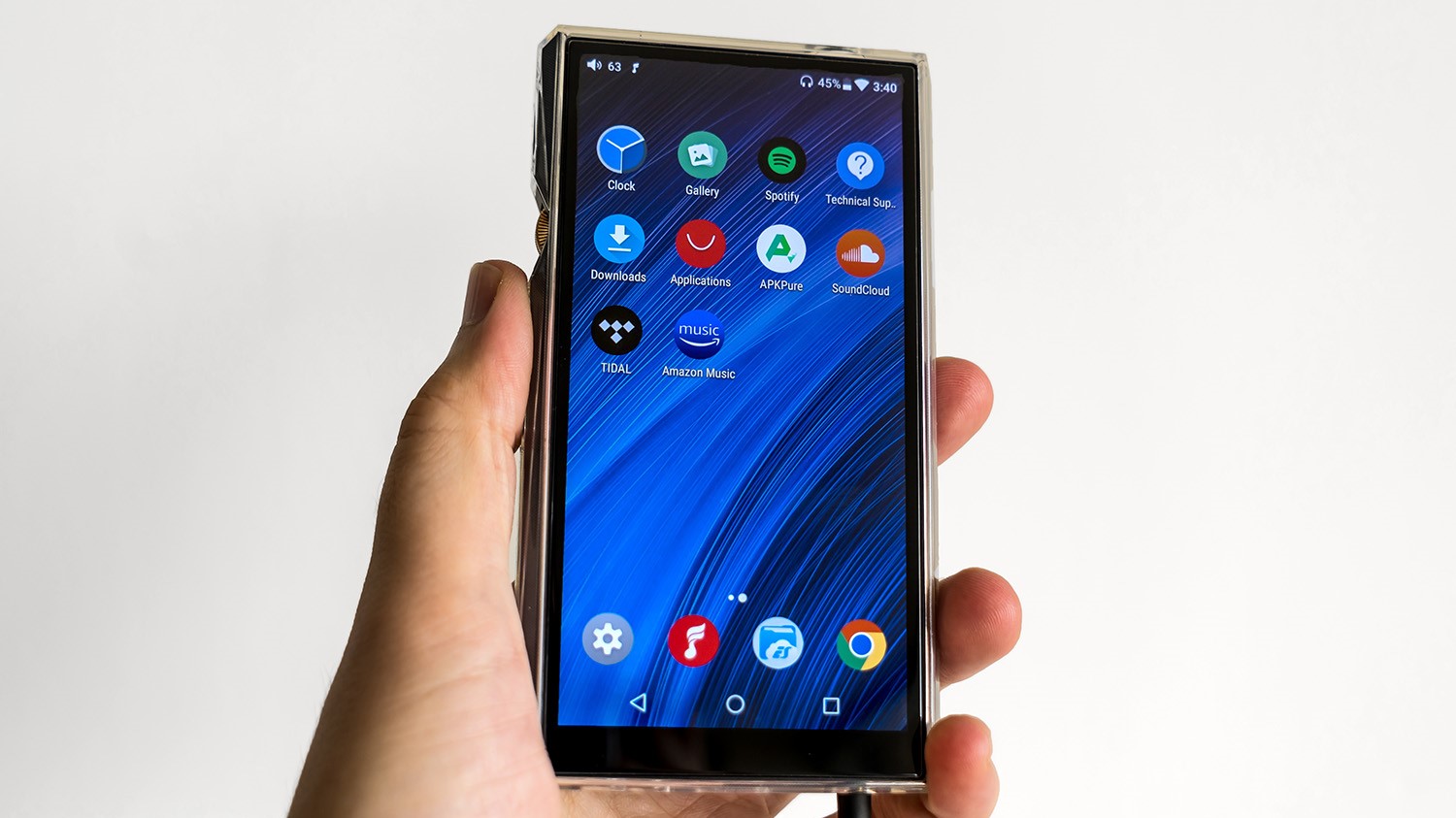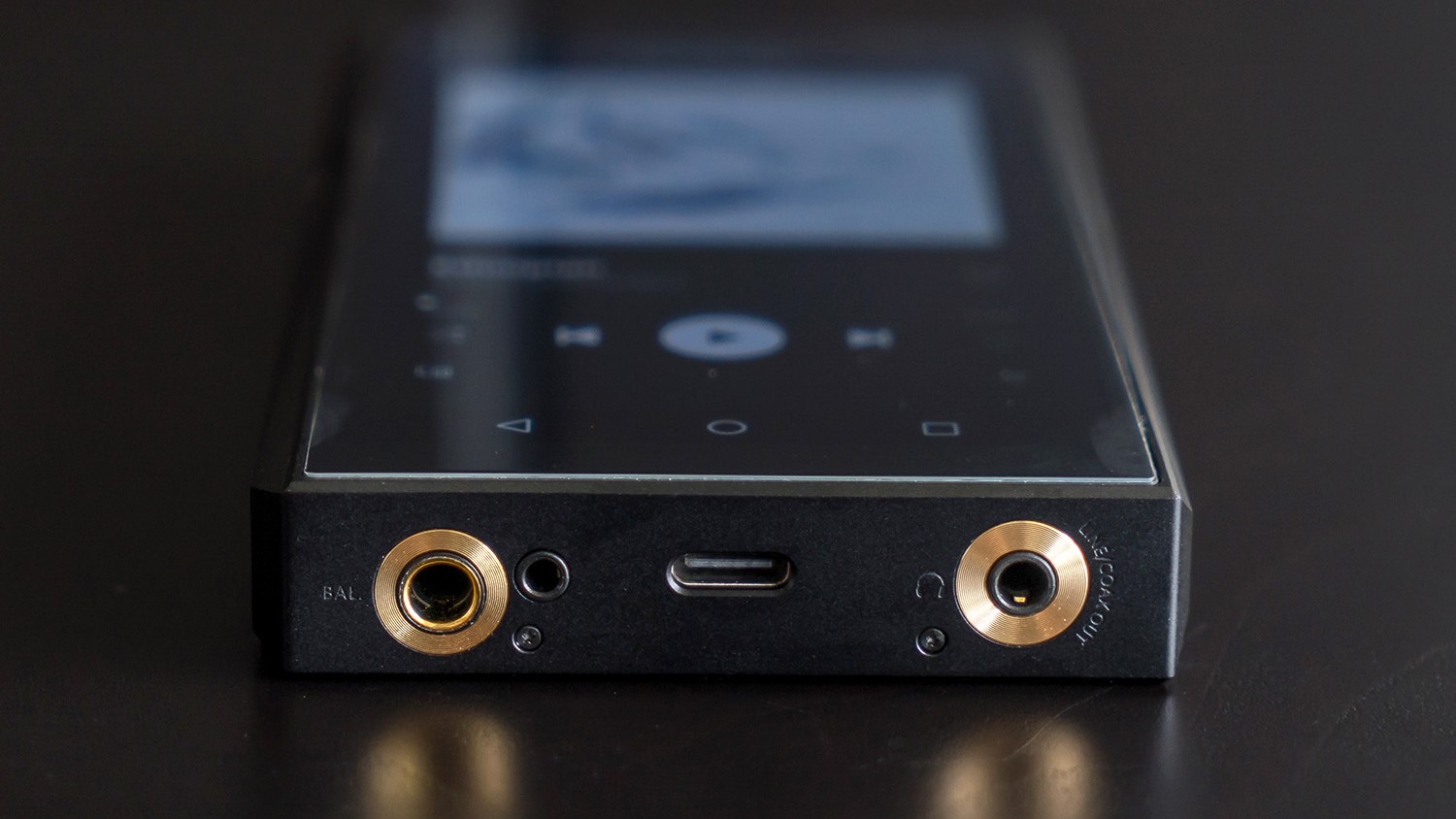TechRadar Verdict
At $459 (£449, AU$699), the M11 is pricey, but it's one of the best players we've yet to see from Fiio. The product skirts the line between a smartphone and an audiophile player, but it’s still about the music, and that’s where it excels most.
Pros
- +
Solid audio quality
- +
Better software experience
- +
USB DAC, AirPlay and DSD
Cons
- -
No Google Play Store
- -
Thicker and heavier design
- -
Problems with memory card slot
Why you can trust TechRadar
At what point does a hi-fi music player veer into an Android smartphone-esque user experience? That’s the question the Fiio M11 Portable High-Resolution Audio Player tries to answer with its Android OS and dual AK4493EQ DACs. In short, while this may look like your Android phone, it’s still all about the music.
By balancing the usability of a smartphone with the audio prowess of its top-tier digital audio players, the M11 tries to be more accessible. That said, as a high-res DAP (digital audio player), the M11 doesn’t disappoint, and the increased hardware under the hood pays some dividends on the software side too.
Design
When compared to other Fiio DAPs like the Fiio M9, the M11 is noticeably thicker and heavier, but we can understand why when diving into the parts that make up its sum: The 5.15-inch IPS display has a 720p resolution, putting it in HD territory, unlike previous models in the M series. The screen is brighter, sharper and offers better viewing angles than the M9 had. We would say it’s good enough to even watch video, but we’ll get to that later.
To stand out further, the company loaded up on inputs arrayed at the bottom. There’s a standard 3.5mm headphone jack, 2.5mm jack and 4.4mm jack to go with a USB-C port (for charging and playback). The play and pause button on the left edge lines up with track navigation and a volume dial. The dial even ‘clicks’ to provide some feedback when moving up or down.
There isn’t just one, but rather two microSD card slots along the right edge. Both are capable of handling cards as high as 2TB for a theoretical total of 4TB. Depending on how much music you have, it’s certainly possible to take a whole library of high-res audio files with you.

There is, however, a caveat to that setup. Users online reported having issues with some high capacity cards in slot 1, which Fiio acknowledged. The particular card in question was the Lexar 512GB, where the M11 might not detect the card or stop it from copying files. Fiio claims that cards from other vendors don’t cause the same issue, and when we threw in a SanDisk and Samsung card, we didn’t really notice anything unusual.
Despite that, the company recommends using slot 2 if only going with one card, so that’s what we did. There is 32GB of internal storage (26GB actually usable), though we preferred to load up high-res files off a card or local DLNA streaming.
Sign up for breaking news, reviews, opinion, top tech deals, and more.
As for the key components inside, the M11 runs on a Samsung Exynos 7872 processor, which is a mid-range chipset used in some smartphones in 2018. On the audio side, Fiio used dual AK4493EQ DACs, with plenty of amplification and power to drive just about any pair of headphones plugged into it.

Connectivity
The wired connections, notwithstanding, the M11 handles Bluetooth and Wi-Fi just the same for wireless playback. We were surprised that a DAP at this level in 2019 would stick to Bluetooth 4.2, rather than move up to 5.0, but it’s not something that hindered us too much.
Fiio covers all the key lossless codecs, like aptX, aptX HD, LDAC and LHDC. What’s notably missing is AAC over Bluetooth, which the M11 doesn’t natively support. Even so, the player does work with AAC as a format, provided that those music files are stored on a card or being streamed. We were able to play tracks we previously downloaded from the iTunes Store.
Given the M11 supports both 2.4GHz and 5GHz Wi-Fi signals, we were able to utilize that in a few ways. AirPlay remains a feature somewhat buried in the settings, but when enabled, the M11 becomes a receiver to playback audio from an iOS device or Mac computer. It was one way we were able to circumvent software restrictions that we’ll touch on in the next section.

We could play tunes from Apple Music, Google Play Music or just about any other source and gain the benefit of the M11’s superior fidelity. DLNA and UPnP support is also great, letting us stream FLAC and WAV files we had stored on a local NAS (network attached storage) drive. It was seamless and easy to manage, except we wish there were better ways to make that happen away from home. Fiio still doesn’t offer solid apps like Plex to access media servers remotely. The same goes for apps from NAS makers, like Synology or Qnap. Find APKs of those apps, however, and you can get the ball rolling.
One thing we always liked about Fiio’s recent DAPs is the USB-C functionality. While we’re not crazy about the USB 2.0 charge speed, we do like the DAC function with Windows PC and Macs. We could also do the same when making the M11 a Bluetooth transmitter, routing the audio from the computer to a pair of Bluetooth headphones.
Fiio also includes a coaxial-to-3.5mm adapter in the box for connecting anything compatible. We didn’t try it with any components, but it’s there if you want it.
Software
The M11 runs on Android 7.0 Nougat, albeit in a slightly neutered form. We say that because, yet again, there is no Google Play Store to download apps with routine aplomb. Instead, Fiio tries to offset that with its own market (called Applications), which includes several popular music and streaming apps ready to download. Tidal, Qobuz, Spotify, Amazon Music, SoundCloud, Deezer, TuneIn Radio and Moov are among those off the bat.
That also includes a quasi-repository of downloadable APK files and APK marketplaces. For example, APKPure is one of them, whose store looks like Google Play. They stick to free apps only, as there’s no way to tie in a Google account with any apps from these platforms. We got notifications to update apps but not at the same time as when they receive them from Google Play. When a new version of the APK was available, we could update to that one.
The Android experience also extends to a choice between something classic and something modern. For instance, by default, the M11 had soft keys at the bottom for back, home and multitasking. We could turn those off in favor of gesture controls in settings, which are the same as those we experienced in the M9.

Even though it has a nice screen, Fiio clearly didn’t intend for the M11 to be a video playback device. But that’s not to say they blocked it. With the Chrome browser preinstalled, we surfed over to YouTube and Netflix and were able to watch videos freely. We could only go fullscreen when tapping the button to expand, as we weren’t able to rotate the orientation with a simple tilt sideways. Since Netflix hasn’t certified the M11, none of its content actually plays in HD on the player.
Fiio did address another major shortcoming of previous models — over-the-air firmware updates. We didn’t have to go through the old process of downloading them on a computer, copying them to a memory card and then installing from that. The main reason is probably because the M11 has more than enough storage to handle an upgrade, regardless of whether there’s a card slotted in or not. Either way, it’s an overdue change that we were glad to see.
Performance
With such wide-ranging support and improved software, the M11 would probably appeal to an audiophile looking for access just as much as audio quality. We found the player checked off both boxes more often than not.
Not surprisingly, it handles popular lossless formats, like WAV, FLAC, ALAC and AIFF, plus the lower-res ones that everyone has heard, like MP3 and AAC, among others. The M11 does have an interesting feature called ‘All to DSD’ that up-converts any other format to DSD (Direct Stream Digital), a modulation encoder developed by Sony and Philips.
We tried this, noting the pop-up warning us that battery life would decrease faster with it turned on. (Fiio was right - battery life dropped more precipitously with it enabled, not to mention how much warmer the player got to the touch.)
However, audio quality, generally speaking, was excellent, in most cases. Whether we had DSD on or off, playing high-res files or streaming from an app, or going through folders of music as a USB DAC, the M11 carried its weight well. What we liked most was the way muddy tracks came through with more balanced verve.
The M11 won’t perform miracles by making a terrible MP3 sound like a CD, but it undoubtedly made everything sound good. Instruments had a warmth to them that we don’t always experience in smartphones (unless it’s one of LG’s higher-end handsets). The depth and resonance hits plateaus that we simply don’t get with phones or tablets.

Fiio includes an EQ in its music app to tailor sound further, so it isn’t a one-size-fits-all scenario. Unfortunately, its settings aren’t system-wide, so once we listened on Tidal or Spotify, we lost any chance of using those custom presets. One way around that was to install an EQ app as an APK that could do that. We tried a few, and recommend you do the same.
With its fatter body, there is a bigger battery inside the M11, and Fiio says it should last up to 13 hours per charge. We never hit that number even once during testing. All to DSD was, by far, the biggest battery killer, as was the screen if it was set at a higher brightness. We came up with an approximation of about 10 hours based on mixed usage. We did better with wired headphones, as opposed to wireless or USB DAC playback, which was to be expected.
Verdict
At $459 (£449, AU$699), the M11 is pricey, but it's one of the best players we've yet to see from Fiio. The product skirts the line between a smartphone and an audiophile player, but it’s still about the music, and that’s where it excels most.
- Don't miss our round-up of the best MP3 players in 2019
Ted Kritsonis is the Freelance Tech Journalist. He is a Tech journalist contributing to a dozen publications: Globe and Mail, MobileSyrup, Futurithmic, Android Central, TechRadar, and WhatsYourTech.ca, among others.

